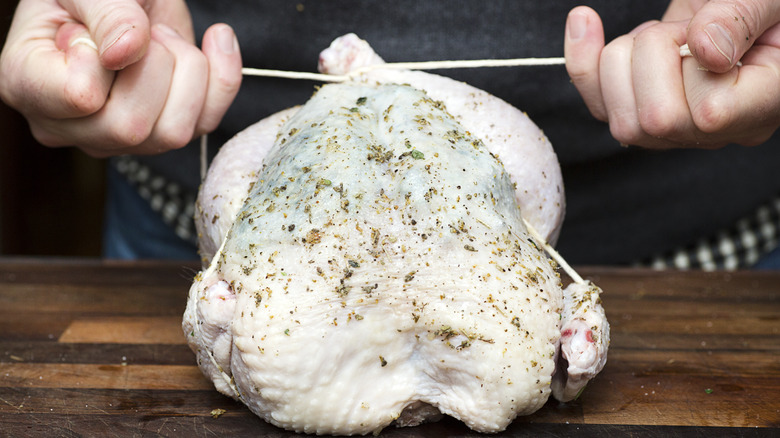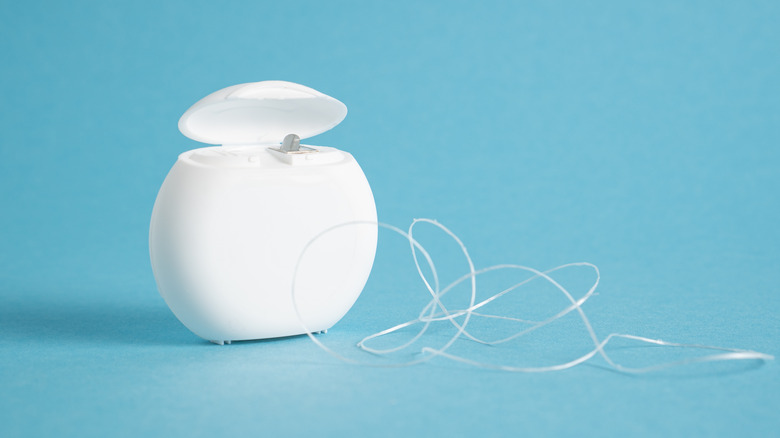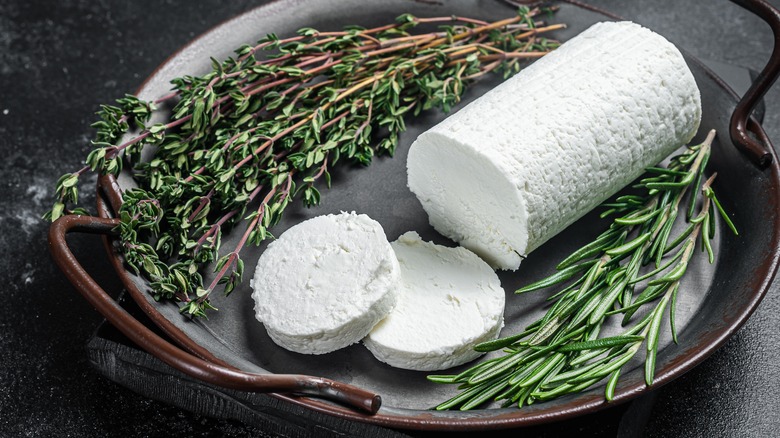The Dental Floss Hack You Need When You Run Out Of Kitchen Twine
It's the end of the week and you finally have time to really put together a home-cooked meal. The bird that's been sitting in your freezer is now defrosted, and you're dreaming about sitting down to a perfectly roasted chicken flanked by aromatic vegetables. The herbs and spices are gathered on the counter, and your favorite, tried-and-true recipe is ready to go. You pull open a drawer to reach for that one final tool and realize you're out of it: twine.
Twine can make or break a roast chicken and go miles in preparing other meats, as well. Realizing you're out of it could ruin the whole day, but it doesn't have to, because you likely already have the perfect substitute — dental floss. Generally reserved for the bathroom, dental floss is an arm's reach away and super easy to employ in the kitchen, where you would usually utilize twine.
Use dental floss for roasts and meat dishes
Dental floss is a great sub for twine partially because you probably already have it, but also because it works just as well. It can be used to truss that chicken for roasting, but it can also be used on beef and pork roasts to help the meat retain its shape. If you're making a dish that requires rolling up ingredients — think rouladen or braciole — dental floss will get the job done. And if you're stuffing pork chops or fish, dental floss will help hold it all together.
Of course, there are some things to consider when reaching for the floss and heading to the kitchen. Lots of dental floss on the market is flavored, and that could be a problem if you're using it for cooking. Cool Mint may taste fantastic in the morning, but it's not a great complement for beef or chicken. Similarly, fruit-flavored flosses should be skipped, unless you're looking to give new meaning to the phrase "orange chicken." Unflavored and unwaxed (so it doesn't melt or even potentially ignite) floss is the way to go.
Other ways to use dental floss in the kitchen
Trussing a chicken (or binding a roast) is one avenue of using dental floss, but the reality is: It's a multitasker in cuisine. For as good as it is at keeping things together, it may be even better at taking them apart. Dental floss is great for cutting and slicing things, especially soft foods. In a piece for Food & Wine, chef and author Judy Joo explains, "It's really useful for cutting soft cheeses cleanly without smashing them." Super soft cheeses especially, like chèvre, can easily be cut into slices with a bit of dental floss.
Floss can also be used to slice dough logs when baking. And that's not all! It's also a secret weapon for dealing with something like chocolate chip cookies that are stuck to the pan when they come out of the oven. Running a stretch of dental floss under cookies will loosen them from the pan with minimal damage — no more broken treats. When it's time for an evening roast or even just an afternoon baked good, dental floss has earned itself a place in the kitchen.


